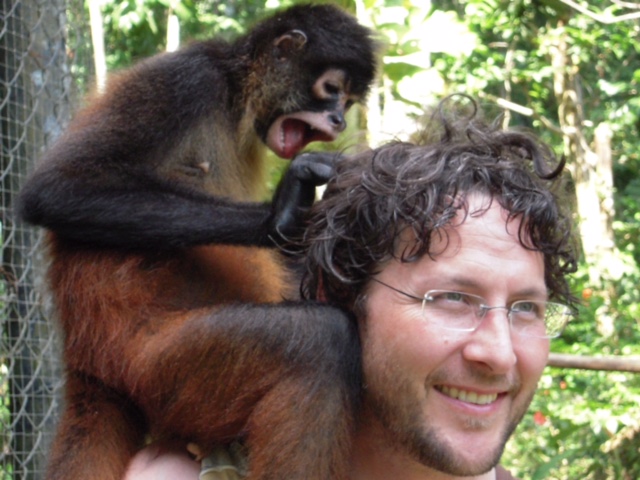
OUR SPONSOR
Greater Patchogue coverage is funded in part by New Village at Patchogue, open-concept rental residences with sleek contemporary design. Click here
for a tour.
If you have bird feeders then you certainly enjoy the flurry of feathers visiting your yard. The content sparrows on the ground, the jays and cardinals in the shrubs, and the occasional swoop of a predator like a sharp-shinned hawk.
But what about watching the feeders at night?
Some wildlife wait until the sun goes down before coming out for a bite. Of course, raccoons certainly try to make a mess of things and the ground sparrows appreciate their efforts.
Yet there is another mammal here on Long Island that will visit too: the flying squirrel.
Flying squirrels on Long Island? Indeed!
The first time I saw a flying squirrel on Long Island was at Caleb Smith State Park in Smithtown. I was walking the trails after dark as part of an owl study when it happened. While standing motionless against a tree I heard a strange, thin, high-pitched whistle almost above my sense of hearing.
And then bam, this flying squirrel landed on my tree about a foot over my head, gliding his way to somewhere.
It looked at me with probably the same expression I had on my face: what the heck is this?
After a momentary pause, it quickly scampered up the tree and disappeared into the darkness as quickly as it appeared.
Not long after that night, I heard my birdseed container rattle outside. Expecting a fat raccoon to be head-first in the bin, I flipped on the porch light only to see two flying squirrels nibbling seeds on the feeders.
I was surprised that they didn’t immediately run when the lights came on, and I could see very clearly their velvety grey and black coats, their white bellies and cute beady eyes. As they stretched for another seed I could clearly make out their skin flaps that allow them to glide from tree to tree. I then opened the door and they dashed up the feeders, across the cord, and right up the tree.
The seed bin I heard rattling was ajar and I lifted it to see one more flyer in there stuffing his face. It panicked and launched itself from the container lip, gliding about 6 feet, just short of the base of the tree. Impressive!
It was a treasure to experience. Now I take delight in checking my feeders day and night in hopes of seeing another rare glimpse at these cutest of squirrels.
FUN FACTS
1. Flying squirrels don’t actually fly; they glide using an extra flap of skin between their front and back legs. When they stretch their arms and legs out, the skin flap is pulled tight and acts like a sail. The same design is now used by people for a gliding suit.
2. While not rare or endangered, flying squirrels are uncommon for people to see on Long Island. Not a lot is known about their population here but they tend to be seen around pine forests with mixed hardwoods. They also prefer older forests. If you live near woods then you might have flyers in your neighborhood!
3. Owls are their primary predators on Long Island. They move in short quick bursts — perhaps a tactic to avoid an owl attack.
 Eric Powers is a biologist and outdoor educator. He offers educational services, from live animal shows to foreign excursions, through his company Your Connection To Nature.
Eric Powers is a biologist and outdoor educator. He offers educational services, from live animal shows to foreign excursions, through his company Your Connection To Nature.
photo by Laurie Dirkx



























